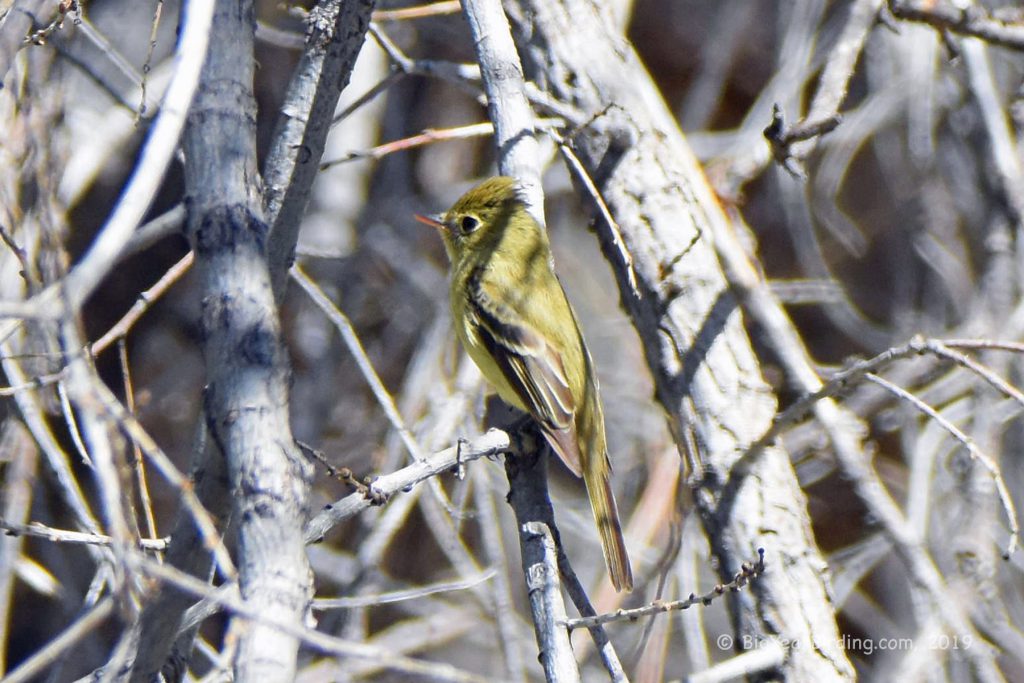The Pacific-slope Flycatcher (Empidonax difficilis) is a small passerine bird that measures approximately 5.5 inches (14 cm) in length and weighs around 0.3 ounces (8.5 grams). This bird has a grayish-olive upper body and a yellowish underbody with a whitish throat and eye-ring. The Pacific-slope Flycatcher has a relatively short bill and dark wings with two whitish wing-bars. This bird’s tail is relatively long, with a slightly forked shape.
The Pacific-slope Flycatcher is a breeding resident of western North America, from southern Alaska to northern Baja California, Mexico. During the breeding season, this bird can be found in forested areas, especially in riparian and mixed-coniferous forests. In the winter, the Pacific-slope Flycatcher migrates to Mexico and Central America, where it can be found in a variety of habitats, including tropical forests and shade coffee plantations.
The Pacific-slope Flycatcher is a relatively shy bird that is often heard before it is seen. Its vocalizations include a sharp “pip” and a plaintive “wheep” call. This bird feeds on insects, which it catches by flycatching from a perch or by hovering in the air. Its diet includes a variety of flying insects, such as flies, moths, and beetles.
One of the distinguishing field marks of the Pacific-slope Flycatcher is its eye-ring, which is a distinctive whitish color. This bird can also be distinguished from other Empidonax species by its grayish-olive upperparts and yellowish underparts. The Pacific-slope Flycatcher is very similar in appearance to the Cordilleran Flycatcher (Empidonax occidentalis), and the two species were once considered a single species. However, recent studies have shown that the two species are distinct.
Conservation efforts for the Pacific-slope Flycatcher have focused on preserving its habitat, which is threatened by logging, grazing, and development. The Pacific-slope Flycatcher is listed as a Species of Least Concern by the International Union for Conservation of Nature (IUCN). However, its range has been reduced by habitat loss, and it is still vulnerable to further habitat destruction.

